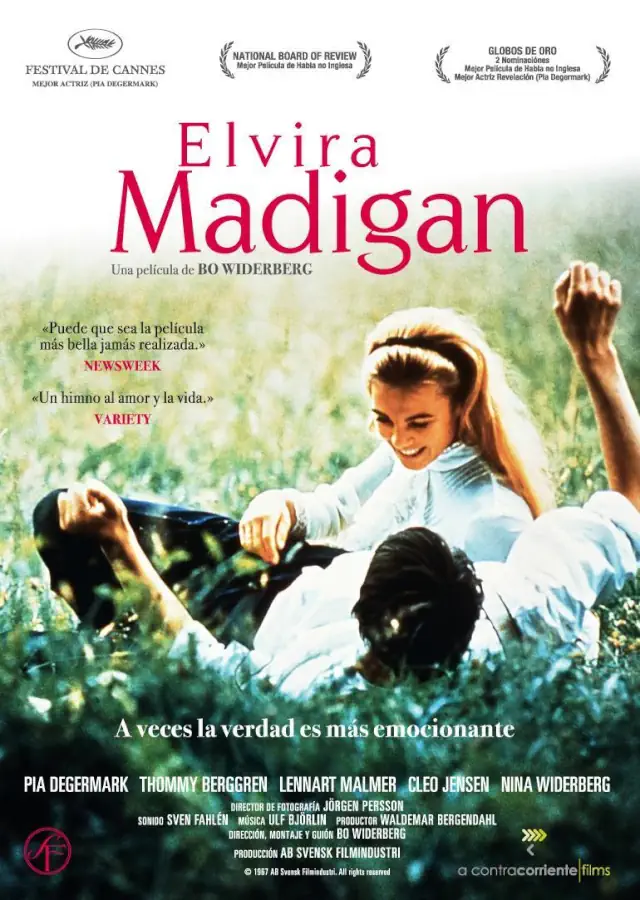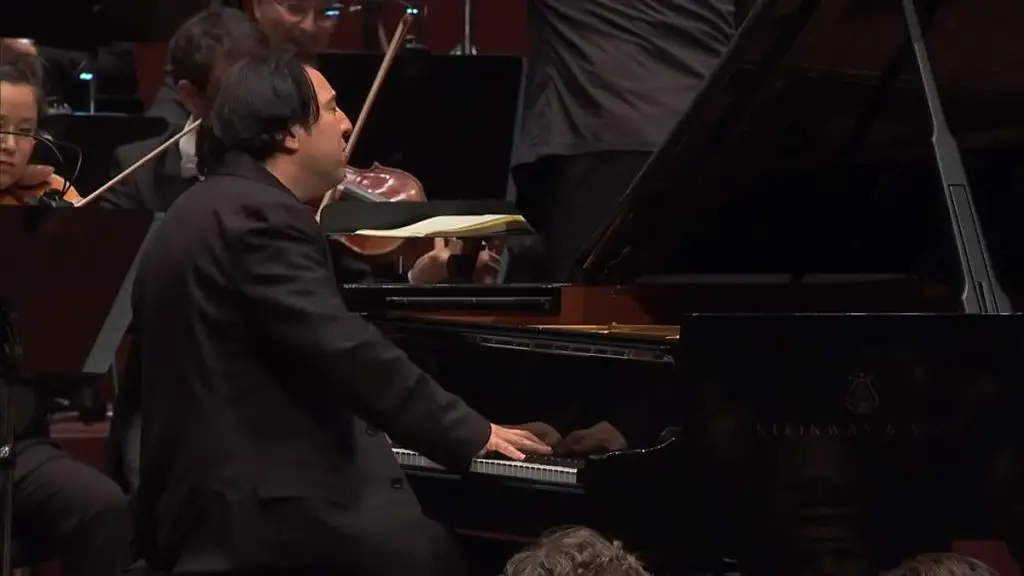Accompanied by the Orchestra Filarmonica Della Scala, Italian classical pianist Maurizio Pollini performs Wolfgang Amadeus Mozart’s Piano Concerto No. 21 in C major, K. 467. Conductor: Riccardo Muti.
Wolfgang Amadeus Mozart’s Piano Concerto No. 21
The Piano Concerto No. 21 in C Major, K. 467, by Wolfgang Amadeus Mozart, holds a special place in the classical music repertoire, celebrated for its expressive depth, innovative orchestration, and the beauty of its melodies. Composed in 1785, four weeks after the completion of the previous Piano Concerto No. 20 in D minor, K. 466, and during the peak of Mozart’s career in Vienna, this concerto exemplifies the elegance and sophistication of the classical period.
Unlike Ludwig van Beethoven, whose own piano concertos would later push the boundaries of the form with their dramatic intensity and bold innovations, Mozart’s Piano Concerto No. 21 is characterized by its lyrical melodies, clear structures, and the balance between the solo instrument and orchestra.
Mozart was not only a prolific composer but also a virtuoso pianist, and this concerto was written to showcase his own talents in a series of subscription concerts he was giving in Vienna. The work quickly gained popularity, a testament to Mozart’s genius in blending technical prowess with emotional depth. The concerto’s immediate appeal lies in its second movement, Andante, which has been particularly celebrated for its serene and song-like melody. This movement gained renewed fame in the 20th century when it was featured in the soundtrack of the 1967 film “Elvira Madigan,” leading to the concerto’s nickname, the “Elvira Madigan” concerto.
The orchestration of the concerto is notable for its use of winds alongside strings, a common practice in Mozart’s concertos, which allows for a rich palette of colors and textures. This was a time of experimentation and development in the concerto form, with composers like Mozart leading the way in exploring the dynamic interaction between soloist and orchestra. The Piano Concerto No. 21 is a prime example of this, with its dialogues between piano and ensemble, and its integration of the solo piano part into the orchestral texture, rather than merely juxtaposing the two.
Mozart’s ability to convey a wide range of emotions within a single work is evident in this concerto. From the joyful exuberance of the first movement to the introspective beauty of the second and the spirited finale, Mozart takes listeners on a journey that is as intellectually rewarding as it is emotionally engaging. The work’s structure and thematic development reflect Mozart’s mastery of form and his innovative spirit, which would influence generations of composers, including Beethoven.
Movements
1. Allegro maestoso
The first movement of Mozart’s Piano Concerto No. 21 in C Major, K. 467, is marked as “Allegro maestoso” and sets the tone for the entire concerto with its grandeur, vitality, and the intricate interplay between the solo piano and the orchestra. This movement follows the classical sonata form, a structure commonly used in the first movements of symphonies, sonatas, and concertos during the classical period. Sonata form typically includes an exposition, development, and recapitulation, offering a dynamic framework for thematic exploration and variation.
In the exposition, the orchestra introduces the main themes, establishing the tonal landscape of the movement. These themes are characterized by their melodic beauty and the clarity of their classical style. The piano enters with a flourish, taking up the themes introduced by the orchestra and embellishing them with virtuosic passages and intricate figurations. Mozart’s writing for the piano in this movement is both challenging and expressive, showcasing the instrument’s capabilities and the performer’s skill.
The development section follows, where Mozart manipulates and varies the thematic material, exploring different keys and introducing new ideas. This section highlights his compositional mastery, as he weaves together the themes in complex ways, building tension and drama. The development serves as a journey through contrasting moods and textures, leading to the recapitulation, where the main themes return in the home key, providing a sense of resolution and closure.
One of the remarkable aspects of this movement is Mozart’s use of orchestration. The orchestra is not merely an accompaniment to the piano; rather, it engages in a dialogue with the soloist, creating a rich tapestry of sound. The winds play a particularly important role, adding color and contrast to the texture. Mozart’s orchestration reflects his keen understanding of the instruments and his ability to integrate the piano and orchestra into a cohesive whole.
2. Andante
The second movement of Mozart’s Piano Concerto No. 21 in C Major, K. 467, marked “Andante,” is widely regarded as one of the most beautiful and evocative pieces of music ever composed by Mozart. This movement is celebrated for its serene, lyrical quality and its capacity to convey profound emotional depth within a relatively simple musical structure. The Andante has captivated listeners for centuries, not only within the context of the concerto but also as a standalone piece, often performed and recorded in various arrangements.
Characterized by a gentle, flowing melody, the Andante unfolds with a grace and elegance that is quintessentially Mozart. The movement is set in F major, providing a warm, rich contrast to the bright C major of the surrounding movements. The main theme is introduced by the strings and quickly taken up by the solo piano, which then elaborates on and develops the theme with delicate ornamentations and expressive nuances. This theme, with its song-like quality, speaks directly to the listener’s emotions, embodying a sense of longing and introspection.
The orchestration in this movement is notably restrained, allowing the piano’s lyrical lines to shine. The use of winds—flutes, oboes, bassoons, and horns—adds color and depth to the texture, supporting the piano while never overshadowing it. The interplay between the soloist and the orchestra is subtle yet profound, with each echoing and responding to the other in a delicate balance.
Mozart’s genius in the Andante lies in his ability to create a piece that is both simple and complex. The simplicity is in the clear, memorable melody and the straightforward structure, while the complexity lies in the emotional nuances and the sophisticated interactions between piano and orchestra. The movement progresses smoothly, with each variation on the theme deepening the emotional impact, leading to a gentle conclusion that leaves a lasting impression of tranquility and introspection.

The Andante from Piano Concerto No. 21 has transcended its origins as part of a concerto to become a beloved piece in the classical music repertoire, often used in film scores and ceremonial occasions to evoke a sense of peace and beauty. Its popularity was further cemented when it was featured in the soundtrack of the 1967 Swedish film “Elvira Madigan,” leading to the concerto’s nickname, the “Elvira Madigan” concerto. This movement, with its timeless melody and emotional depth, showcases Mozart’s unparalleled ability to communicate directly to the heart through music, making it one of the most cherished pieces in all of classical music.
3. Allegro vivace assai
The third movement of Mozart’s Piano Concerto No. 21 in C Major, K. 467, marked “Allegro vivace assai,” serves as a vibrant and jubilant conclusion to the concerto. This movement is characterized by its lively tempo, intricate melodies, and the brilliant interplay between the piano and the orchestra, showcasing Mozart’s mastery of the concerto form and his ability to convey a sense of joy and exuberance through music.
Following the introspective beauty of the Andante, the Allegro vivace assai shifts the mood dramatically, bursting forth with energy and vitality. The movement adheres to the rondo form, a common choice for the final movements of concertos during the classical period. In rondo form, a principal theme (the refrain) alternates with one or more contrasting themes (the episodes), creating a structure that is both cohesive and varied. The main theme of this movement is memorable for its rhythmic vitality and its capacity to convey a sense of unrestrained joy.
The piano plays a central role in this movement, delivering dazzling runs, trills, and arpeggios, while engaging in a dynamic dialogue with the orchestra. Mozart composed this movement not only to showcase the virtuosity of the soloist but also to explore the expressive possibilities of the piano, which was, at the time, a relatively new and evolving instrument. The soloist’s passages are both technically challenging and expressively rich, requiring a high degree of precision and musicality.
The orchestra supports and complements the piano, with the winds and strings playing particularly prominent roles. The orchestration is bright and effervescent, with Mozart skillfully weaving together the different instrumental colors to create a rich tapestry of sound. The alternation between the solo piano and the full orchestra adds to the dynamic and celebratory nature of the movement.
The Allegro vivace assai is replete with contrasts, from the spirited main theme to the more lyrical and subdued episodes. These contrasts not only provide variety but also enhance the overall structure of the movement, leading to a climax that is both thrilling and satisfying. The movement concludes with a coda that revisits the main theme, bringing the concerto to a triumphant and exhilarating close.
Sources
- Piano Concerto No. 21 (Mozart) on Wikipedia
- Piano Concerto No.21 in C major, K.467 (Mozart, Wolfgang Amadeus) on the International Music Score Library Project website
- Chopin: Scherzo No. 3 [İlyun Bürkev] - September 14, 2024
- César Franck: Violin Sonata [Argerich, Capuçon] - September 8, 2024
- Beethoven: Piano Sonata No. 23 “Appassionata” [Anna Fedorova] - September 7, 2024
